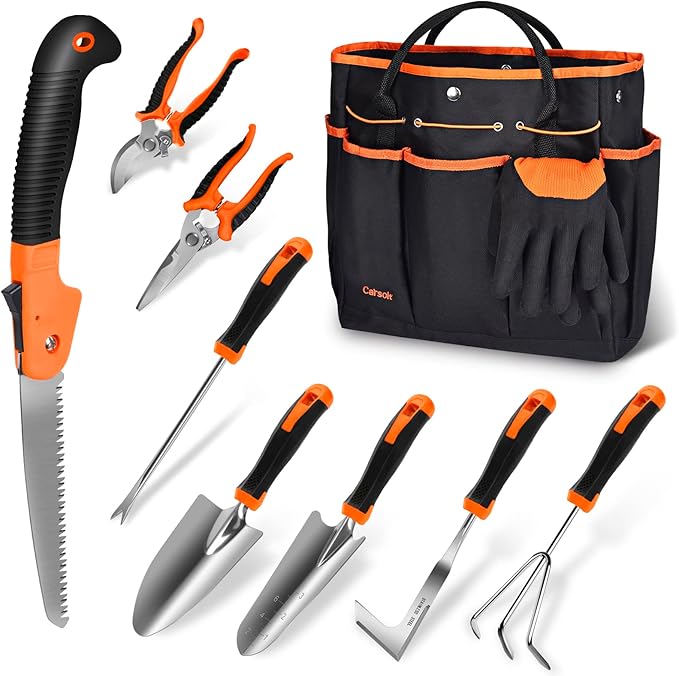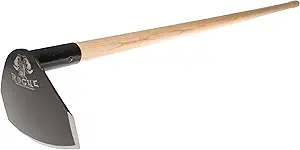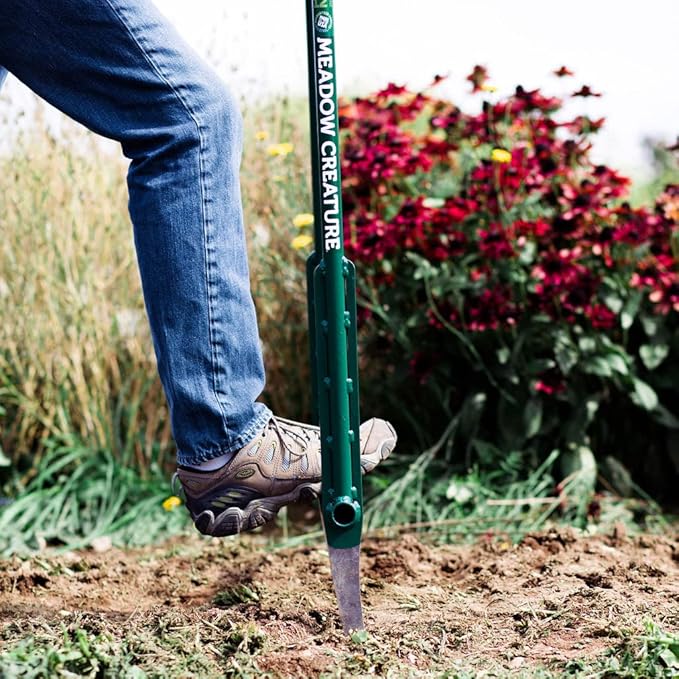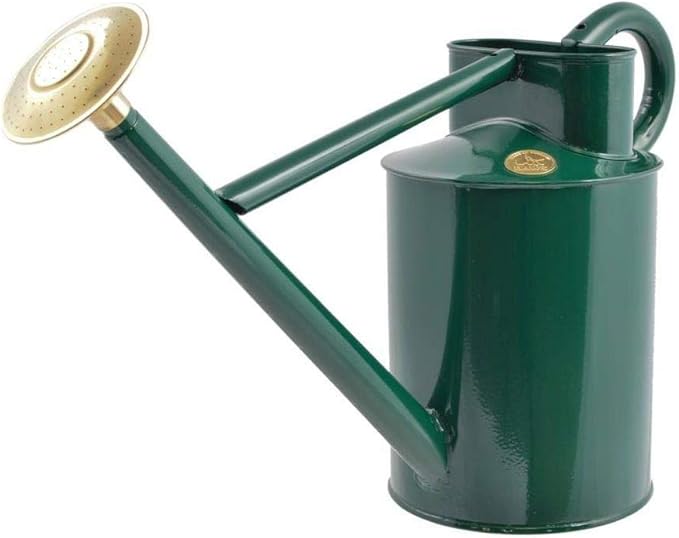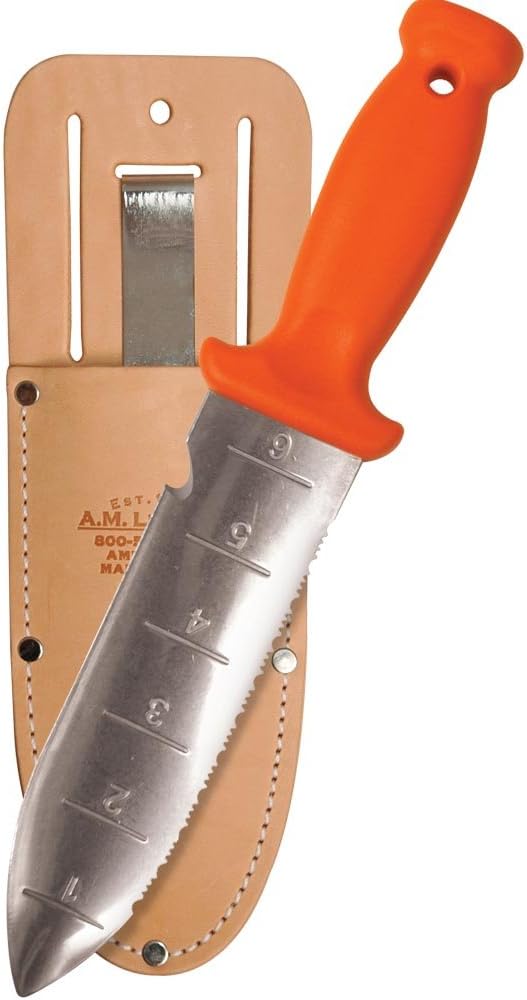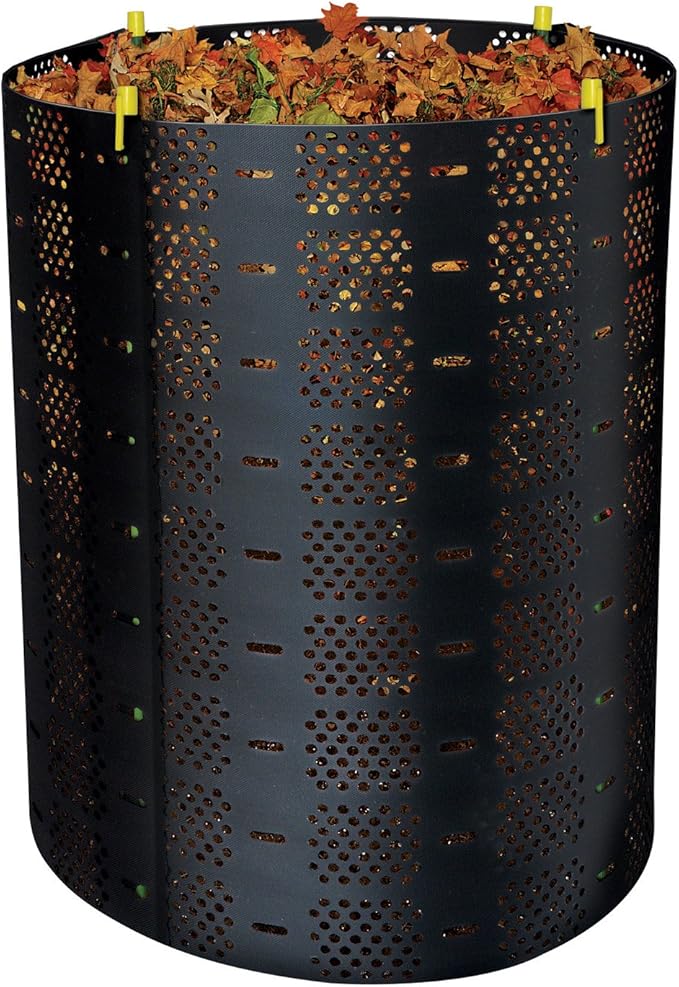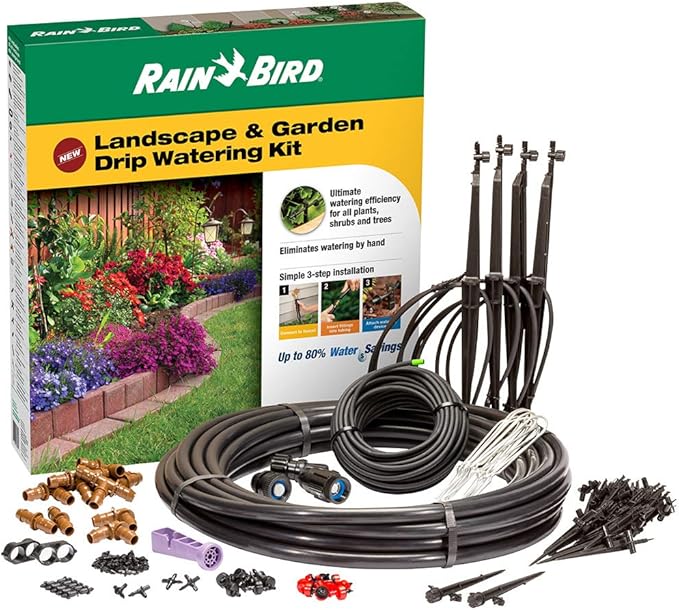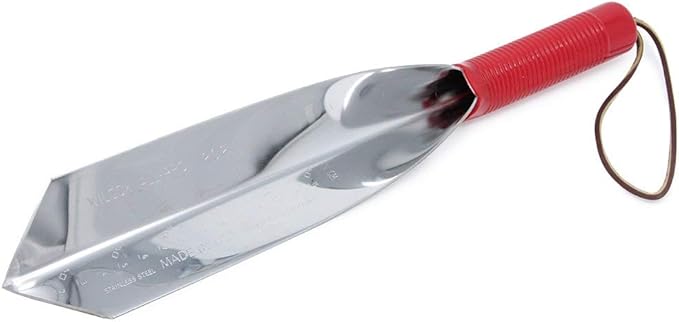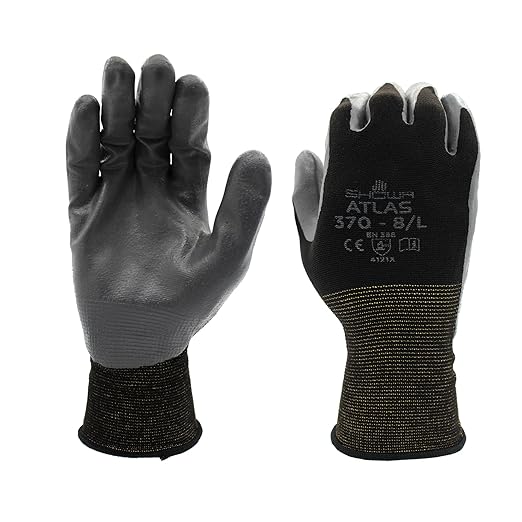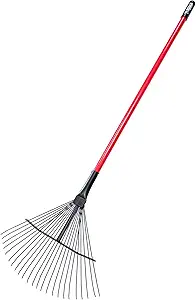15 Essential Gardening Tools for Homesteaders
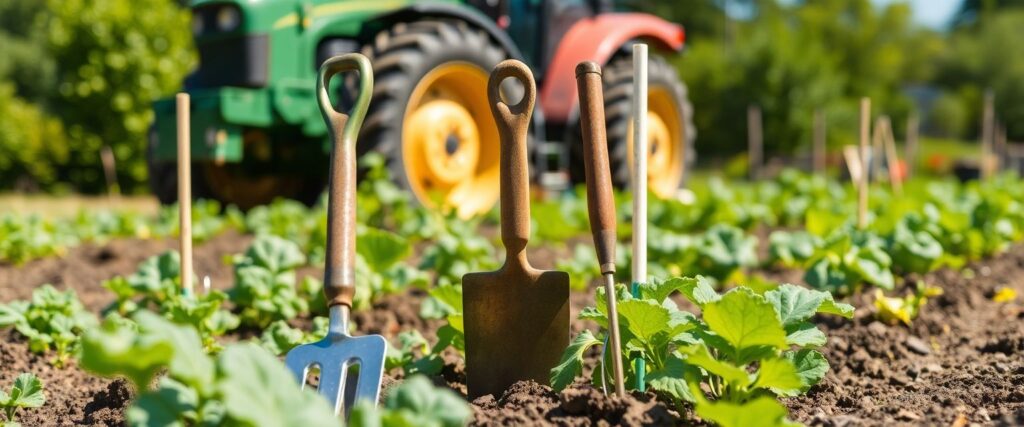
Seasoned homesteaders and passionate gardeners have learnt through years of experience that having the right tools can make all the difference in your gardening efforts. Today, I’m excited to share my top picks for essential gardening tools that every homesteader should have in their arsenal.
Why Quality Matters for Homesteaders
Homesteaders rely on their gardens and small-scale farms for a significant portion of their food supply. Our tools need to handle daily use, often in challenging conditions, without failing us when we need them most.
Durability saves us time, money, and headaches in the long run.
1. The All-in-One Gardening Tool Set
For those just starting out, a gardening set is an excellent choice. The Carsolt 10 Piece Stainless Steel has caught my eye, and for good reason.
This set includes everything from hand trowels and pruning shears to a storage bag. The tools are made with high-grade stainless steel and feature ergonomic handles for comfortable use during those long days in the garden.
One of the standout features of this set is the variety of tools included. You’ll find specialized tools like a bulb transplanter and a three-tine cultivator, which can be incredibly useful for specific gardening tasks. The inclusion of a pair of gardening gloves is a nice touch, though I’d recommend investing in a separate pair of heavy-duty gloves for more intense work.
If you are wanting to start your gardening journey, the Carsolt 10 piece is a good place to start.
If you want to view more details, including the price of the Carsolt 10, then click here otherwise continue reading to find out the other essential tools every gardener and homesteader will need over time.
As am Amazon associate I may receive a commission on eligible products at no extra cost to you.
2. The Workhorse Spade
Every homesteader needs a reliable spade, and the Fiskars Long-Handle Digging Spade is a tool that won’t let you down. This spade features a welded 14-gauge hardened steel blade and an 18-gauge steel shaft, making it one of the toughest spades.
The extra-large D-handle provides plenty of room for two-handed use, which is essential when you’re dealing with tough, compacted soil or digging out stubborn roots. The handle is also designed to reduce fatigue and increase comfort during extended use.
One of the standout features of this spade is it’s sharpened blade. Many spades come with dull edges, but the Fiskars spade arrives ready to slice through soil and roots with ease.
This sharp edge, combined with the welded blade-to-shaft connection, means you can put some serious force behind your digging without worrying about the tool failing.
The powder-coated steel resists rust and friction, which is crucial for a tool that’s going to see a lot of use in varying weather conditions. This spade holds up well even after seasons of heavy use, making it a reliable companion for any homesteading project.
3. The Versatile Hoe
When it comes to weeding, cultivating, and creating furrows for planting, a good hoe is indispensable. The Rogue Hoe 7-Inch Wide Blade Field Hoe has become a go-to tool for these tasks.
The blade is made from recycled agricultural disc blades, which results in an incredibly tough and sharp edge. This means you can tackle even the toughest weeds with less effort, and the blade maintains it’s edge far longer than traditional hoes.
The 60-inch handle is made from ash wood, providing a good balance between strength and weight. It’s long enough to give you plenty of leverage, but not so long that it becomes unwieldy.
The handle is also replaceable, which is a great feature for a tool that sees as much use as a hoe does on a homestead.
The wide blade is excellent for cultivating large areas quickly, but it’s also precise enough for working around delicate plants. The sharp corners of the blade are perfect for creating furrows for planting seeds. While it might be overkill for a small backyard garden, for homesteaders working larger plots, this hoe is a game-changer.
It can significantly reduce the time and effort you spend on routine garden maintenance.
4. The Precision Pruners
For tasks that need a bit more finesse, like pruning fruit trees or harvesting delicate herbs, a good pair of pruning shears is essential. The Felco F-2 Classic Manual Hand Pruner is widely regarded as one of the best in the business, and I wholeheartedly agree.
These pruners feature hardened steel blades that stay sharp even with heavy use. The anvil blade has a sap groove to prevent sticking, which is a godsend when you’re working with sappy plants like tomatoes or fruit trees.
The handles are shaped to fit comfortably in your hand, reducing fatigue during long pruning sessions. The shock-absorbing bumper and non-slip coating further enhance comfort and control.
Every part of the Felco F-2 is replaceable. With proper maintenance, these pruners can last a lifetime – a true investment for any serious homesteader.
The spring-loaded action makes repeated cuts easier on your hands, which is crucial when you’re dealing with a large orchard or extensive berry patch. While they might be more expensive than some other options, the durability, comfort, and precision of these pruners make them well worth the investment.
5. The Heavy-Duty Wheelbarrow
No homestead is complete without a sturdy wheelbarrow, and the Gorilla Carts GOR6PS Heavy-Duty Poly Yard Dump Cart is a modern take on this classic tool that’s worth considering. Unlike traditional wheelbarrows, this cart features four wheels, which provides excellent stability and makes it much easier to maneuver over uneven terrain. The pneumatic tires can handle a variety of surfaces, from muddy gardens to gravel paths.
The poly bed is rust-proof and can handle up to 1,200 pounds of material, which is more than enough for most homesteading tasks. Whether you’re moving compost, harvested produce, or landscaping materials, this cart can handle it all.
A favorite feature is the quick-release dump feature. With a simple pull of a lever, you can tilt the bed and easily dump out it’s contents.
This is a huge time-saver when you’re moving large amounts of material.
The padded pull handle is comfortable to grip and can be easily pulled by hand or attached to a lawn tractor or ATV for larger jobs.
While it’s not as maneuverable in tight spaces as a traditional wheelbarrow, the added stability and capacity more than make up for it in most homesteading applications. If you’re dealing with large gardens or extensive landscaping projects, this cart can be a real back-saver.
6. The Versatile Broadfork
For those looking to improve soil structure without the use of power tools, the Meadow Creature Broadfork is an excellent addition to any homesteader’s toolkit. This tool, also known as a U-bar digger, is designed to loosen and aerate soil without inverting it, which helps maintain the soil’s natural structure and useful microorganisms.
It’s particularly useful for no-till gardening methods, which are gaining popularity among sustainable agriculture enthusiasts.
The Meadow Creature Broadfork is built to last, with a frame made from 1/4 inch thick steel and tines forged from 1/2 inch thick steel. This robust construction means it can handle even the toughest, most compacted soils without bending or breaking.
The long handles provide excellent leverage, making it easier to work the soil with less strain on your back. The width of the fork (about 20 inches) allows you to cover a good amount of ground with each pass, but it’s not so wide that it becomes unwieldy.
Beyond it’s primary use of aerating garden beds, it’s also great for harvesting root crops like potatoes, incorporating compost into the soil, and even removing smaller rocks from your garden plots.
The Meadow Creature Broadfork isn’t cheap, but it’s durability and effectiveness make it a worthwhile investment for serious homesteaders committed to sustainable soil management practices.
7. The Essential Garden Fork
When it comes to turning compost, digging up root vegetables, or breaking up tough soil, a sturdy garden fork is indispensable. The Spear & – Jackson Stainless Steel Digging Fork has become my go-to tool for these tasks.
This fork features four polished stainless steel tines that resist rust and soil adhesion, making it easier to use in various soil conditions. The tines are also sturdy enough to handle rocky soil without bending, which is crucial for homesteaders dealing with less-than-ideal ground conditions.
The handle is made from hardwood ash, making it both durable and comfortable to use. The Y-shaped handle design provides excellent grip and leverage, allowing you to work for extended periods without excessive fatigue.
The long socket that connects the head to the handle is a particularly appreciated feature. This design distributes force more evenly, reducing the risk of the handle splitting or coming loose – a common problem with cheaper garden forks.
While it might be tempting to opt for a cheaper option, I’ve found that investing in a high-quality garden fork like this one pays off in the long run. It’s a tool that you’ll use often, and having one that’s comfortable, durable, and effective can make a big difference in your day-to-day gardening tasks.
8. The Indispensable Watering Can
A reliable watering can is a must-have for any homesteader, and the Haws Professional Outdoor Metal Watering Can is a standout choice. This 2.3-gallon (8.8-liter) can is made from hot-dipped galvanized steel, which provides excellent durability and rust resistance.
The oval shape of this watering can isn’t just for aesthetics – it’s designed to distribute weight evenly, making it easier to carry and pour, even when full. The long spout allows for precise watering, which is crucial when you’re dealing with delicate seedlings or plants that prefer water at their base as opposed to on their leaves.
One of the features I love about this watering can is the brass rose (the sprinkler head at the end of the spout). It’s removable, allowing you to switch between a fine spray for seedlings and a stronger flow for established plants.
The rose is also designed to provide an even, gentle shower that won’t disturb soil or damage delicate plants.
The handle is comfortable to grip and well-balanced, which makes a big difference when you’re watering a large garden. While it might seem like a simple tool, a well-designed watering can like this one can save you time and effort in your daily gardening tasks.
9. The Versatile Garden Knife
A good garden knife, also known as a hori hori knife, is an incredibly versatile tool that every homesteader should have. The A.M.
Leonard Classic Stainless Steel Soil Knife is my top pick in this category.
This knife features a 7-inch stainless steel blade that’s serrated on one side and straight on the other. This dual-edge design makes it useful for a wide range of tasks, from cutting through tough roots to dividing perennials.
The blade is also marked with depth measurements, which is incredibly handy for planting bulbs or seedlings at the fix depth.
The handle is made from hardwood and shaped to provide a comfortable, secure grip even when your hands are wet or muddy. It also has a full tang (the blade extends all the way through the handle), which gives it excellent durability and leverage.
This knife is useful for everything from weeding and transplanting to harvesting vegetables and even opening bags of soil or mulch. It’s the kind of tool that you’ll find yourself reaching for constantly, making it well worth the investment for any serious gardener or homesteader.
10. The Essential Compost Bin
Composting is a crucial part of sustainable gardening, and having a good compost bin can make the process much easier and more effective. The Geobin Compost Bin is an excellent choice for homesteaders looking for a simple, effective composting solution.
This bin is unique in that it’s expandable – you can adjust it to hold anywhere from 112 to 216 gallons (423 to 818 liters) of material. This flexibility is great for homesteaders who might need to compost varying amounts of material throughout the year.
The bin is made from recycled plastic, which is both durable and environmentally friendly. It’s perforated to allow for good airflow, which is essential for proper composting.
The black color helps to absorb heat, which can speed up the composting process.
One of the things I appreciate about this bin is how easy it is to set up and use. You simply unroll it, connect the ends, and start filling it with your compostable materials.
When it’s time to turn your compost or harvest finished compost, you can easily open the bin, access the material, and then close it back up.
While it might not be as aesthetically pleasing as some wooden compost bins, it’s functionality and ease of use make it a great choice for homesteaders serious about composting.
11. The Reliable Garden Hose
A good garden hose is essential for any homesteader, and the Flexzilla Garden Hose is one of the best I’ve used. This hose is made from a flexible hybrid polymer that stays flexible in a wide range of temperatures, from -40°F to 150°F (-40°C to 65°C).
One of the standout features of this hose is it’s kink resistance. Anyone who’s ever fought with a kinked hose while trying to water a distant part of their garden will appreciate how smoothly the Flexzilla hose uncoils and recoils.
The hose is also incredibly lightweight, which makes it easy to maneuver around your garden. Despite it’s light weight, it’s surprisingly durable and can withstand being dragged over rough surfaces without developing leaks.
The bright green color might not be to everyone’s taste, but it does make the hose easy to spot in the garden, reducing the risk of accidentally running over it with a lawnmower or other equipment.
The Flexzilla hose is available in various lengths, from 3 feet to 100 feet, allowing you to choose the size that best fits your needs. While it might be more expensive than some basic garden hoses, it’s durability and ease of use make it a worthwhile investment for any serious gardener or homesteader.
The Flexzilla Garden Hose is available through Amazon, click here for price
12. The Efficient Drip Irrigation System
For homesteaders looking to maximize water efficiency and minimize the time spent on manual watering, a drip irrigation system is a game-changer. The Rainbird Drip Irrigation Gardener’s Kit is an excellent starting point for those new to drip irrigation.
This kit includes everything you need to set up a basic drip irrigation system for up to 75 square feet of garden space. It comes with a variety of emitters, including drippers for individual plants and micro-sprayers for broader coverage, allowing you to customize the system to your garden’s specific needs.
One of the things I appreciate about this kit is it’s flexibility. You can easily expand it by adding more tubing and emitters as your garden grows.
The included pressure regulator confirms that water is delivered at the optimal pressure for effective watering, regardless of your home’s water pressure.
Setting up the system does need some initial time investment, but once it’s in place, it can save you hours of watering time each week. It’s also much more water-efficient than traditional sprinkler systems, delivering water directly to the plant’s roots and minimizing evaporation.
For homesteaders dealing with water scarcity or simply looking to reduce their water usage, a drip irrigation system like this one can be an invaluable tool.
Click here to view price for The Rainbird Drip Irrigation Gardener’s Kit
13. The Versatile Garden Trowel
A good garden trowel is one of those tools you’ll find yourself reaching for constantly, and the Wilcox All Pro 14″ Trowel is one of the best I’ve used. This trowel is made from a single piece of stainless steel, which means there’s no weak point where the blade might separate from the handle.
The 14-inch length provides excellent leverage, making it easier to dig in tough soil or pry out stubborn weeds. Despite it’s length, it’s surprisingly lightweight, which reduces hand fatigue during long gardening sessions.
One of the features I love about this trowel is it’s serrated edge. This makes it useful for cutting through small roots or dividing plants, in addition to it’s primary digging function.
The blade is also marked with depth measurements, which is incredibly handy for planting bulbs or seedlings at the fix depth.
The handle is ergonomically designed and features a non-slip grip, which is crucial when you’re working with wet or muddy hands. There’s also a lanyard hole at the end of the handle, allowing you to hang the trowel for storage or attach it to your belt for easy access.
While it might be more expensive than some basic trowels, the durability and versatility of the Wilcox All Pro make it a worthwhile investment for any serious gardener or homesteader.
14. The Essential Garden Gloves
Good garden gloves are crucial for protecting your hands while working in the garden, and the Atlas Nitrile Touch Gloves are some of the best I’ve used. These gloves strike an excellent balance between protection and dexterity, allowing you to handle delicate seedlings or operate small tools with ease.
The gloves are made from a breathable knit fabric with a nitrile coating on the palms and fingers. This coating provides excellent grip, even when working with wet materials, and offers good protection against thorns and other sharp objects.
One of the things I appreciate about these gloves is how well they fit. They come in a range of sizes and have a snug, second-skin fit that prevents dirt from getting inside.
This snug fit also reduces hand fatigue during long gardening sessions.
Despite their lightweight construction, these gloves are surprisingly durable. I’ve found that a pair can last through an entire growing season of heavy use, which is impressive for gloves in this price range.
The breathable fabric helps keep your hands cool and dry, even on hot days. And when they do get dirty, you can simply toss them in the washing machine for easy cleaning.
While they might not offer the same level of protection as heavy-duty leather gloves, for most gardening tasks, the Atlas Nitrile Touch Gloves provide an excellent balance of protection, dexterity, and comfort.
15. The Reliable Garden Rake
A good garden rake is essential for a variety of tasks, from leveling soil to clearing leaves, and the Bully Tools 24-Inch Leaf and Thatching Rake is one of the best I’ve used. This rake features a 24-inch wide head with 24 spring steel tines, making it effective for clearing large areas quickly.
The tines are made from spring steel, which provides an excellent balance of flexibility and strength. They’re able to flex over obstacles without breaking, but still maintain enough rigidity to effectively gather leaves and debris.
One of the standout features of this rake is it’s fiberglass handle. Fiberglass is both lightweight and incredibly strong, which means you can apply significant force without worrying about the handle breaking.
The handle is also 54 inches long, which provides excellent reach and leverage.
The rake head is securely attached to the handle with a ferrule that extends 6 inches up the handle, providing extra strength at this crucial connection point. This design helps prevent the head from coming loose or breaking off, a common problem with cheaper rakes.
While it might be more expensive than some basic garden rakes, the durability and efficiency of the Bully Tools rake make it a worthwhile investment for any serious gardener or homesteader. It’s the kind of tool that can stand up to years of heavy use, making it a true long-term investment in your gardening toolkit.
People Also Asked
What are the most essential tools for a beginner homesteader?
For beginners, I’d recommend starting with a good spade, garden fork, hand trowel, pruning shears, and a sturdy wheelbarrow or garden cart. These tools will cover most basic gardening tasks and help you get started on your homesteading journey.
How much should I expect to spend on quality gardening tools?
Quality gardening tools can be a significant investment, but they pay off in the long run. For a basic set of high-quality tools, you might expect to spend anywhere from $200 to $500.
However, you can build your collection gradually, investing in one or two quality pieces at a time.
Are electric or gas-powered gardening tools necessary for homesteading?
While electric or gas-powered tools can be helpful for larger properties, they’re not strictly necessary for homesteading. Many homesteaders prefer manual tools for their reliability, lower maintenance needs, and the physical exercise they provide.
However, tools like a rototiller or chainsaw can be useful additions as your homestead grows.
How do I maintain my gardening tools to ensure they last?
Regular maintenance is key to extending the life of your tools. Clean your tools after each use, removing dirt and debris.
Keep metal parts lightly oiled to prevent rust.
Sharpen blades regularly, and tighten any loose screws or bolts. Store tools in a dry place when not in use.
What’s the difference between a garden spade and a shovel?
While often used interchangeably, spades and shovels have different designs for different tasks. Spades typically have a flat, straight edge ideal for edging, digging straight-sided holes, and lifting sod.
Shovels have a pointed or rounded blade better suited for digging and moving loose materials like soil or gravel.
Are there any multi-purpose gardening tools that can save space and money?
Yes, there are several multi-purpose tools that can be great for homesteaders with limited storage or budget. A hori hori knife, for example, can be used for digging, cutting, and measuring.
A wheel hoe can serve as a cultivator, weeder, and furrower.
Look for tools that can perform many functions to maximize your investment.
How important is ergonomics in gardening tools?
Ergonomics is crucial in gardening tools, especially for homesteaders who spend long hours working in their gardens. Tools with ergonomic designs can reduce strain and fatigue, preventing injuries and making your work more enjoyable.
Look for tools with comfortable grips, appropriate handle lengths, and designs that promote natural body positioning.
What are some eco-friendly options for gardening tools?
Many eco-friendly gardening tools are available today. Look for tools made from sustainable materials like bamboo or recycled plastics.
Some companies also make tools from recycled metals.
Additionally, choosing high-quality, durable tools that won’t need frequent replacement is an eco-friendly choice in itself.
How do I choose the right size tools for my garden?
The right size tools depend on your physical build and the size of your garden. For hand tools, choose ones that feel comfortable in your grip.
For longer tools like spades or rakes, the handle should reach about your elbow when the head is on the ground.
For larger gardens, consider tools with longer handles for better reach and leverage.
Are there any gardening tools specifically designed for people with physical limitations?
Yes, there are many adaptive gardening tools designed for people with physical limitations. These include tools with extended handles to reduce bending, ergonomic grips for easier holding, and lightweight materials to reduce strain. Some companies specialize in adaptive gardening tools, offering a wide range of options for different needs.
Key Takeaways
- Investing in high-quality, durable gardening tools is crucial for homesteaders who rely heavily on their gardens.
- Essential tools include a comprehensive gardening set, a sturdy spade, a versatile hoe, precision pruners, and a heavy-duty wheelbarrow or cart.
- Specialized tools like a broadfork and a hori hori knife can greatly enhance your gardening efficiency and capabilities.
- Proper maintenance of your tools, including regular cleaning and sharpening, can significantly extend their lifespan.
- Consider ergonomics when choosing tools to reduce strain and fatigue during long gardening sessions.
